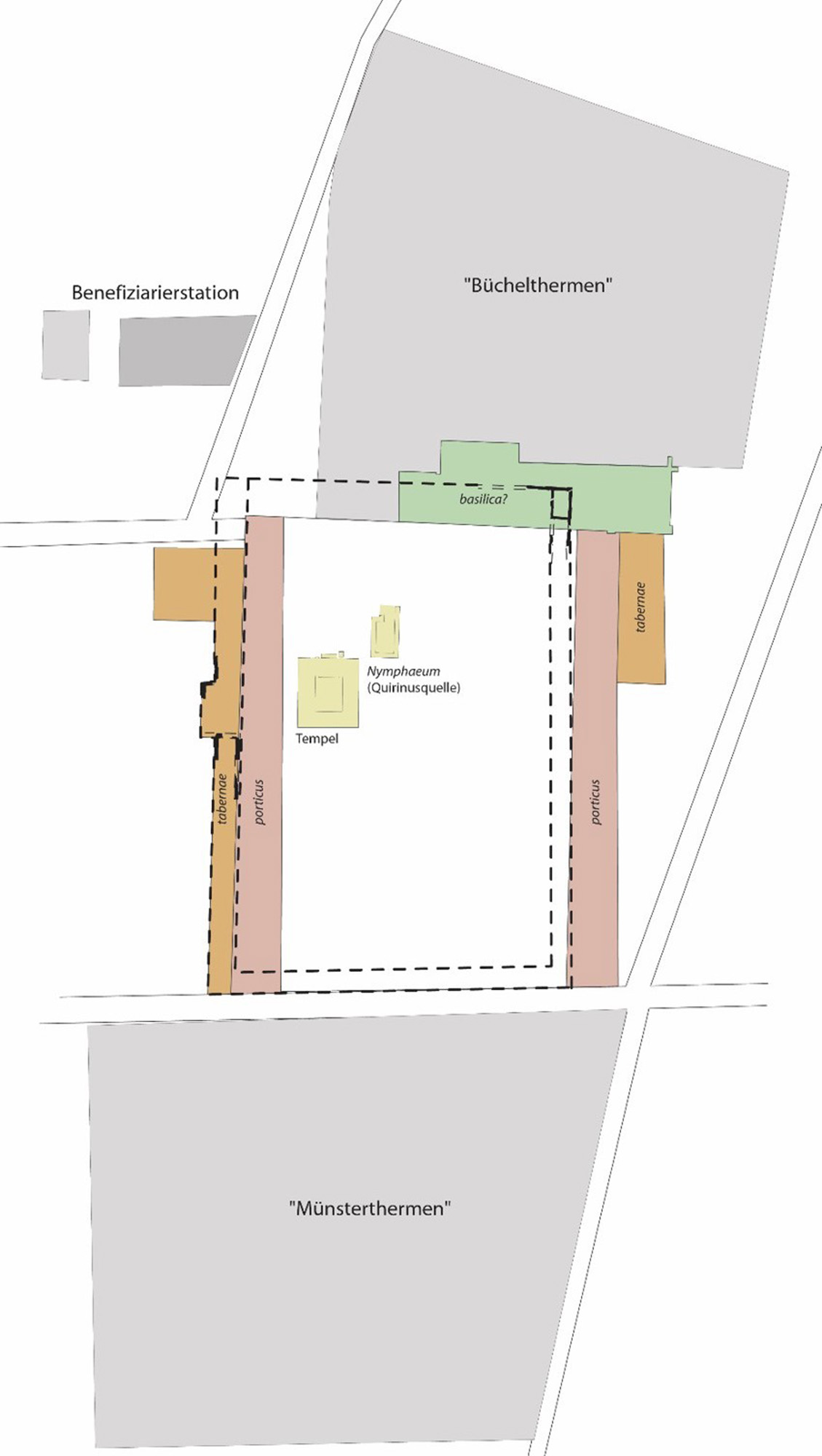Meet and greet: Squares in Secondary Agglomerations (vici) of the Northwestern Roman Provinces
While fora in large cities are comparatively well studied, their equivalents in so-called secondary agglomerations (vici) are relatively little understood. In vici, too, we find plazas that had a variety of functions comparable to those of the cities. However, any attempt to attribute the term “forum” to these squares reveals a research deficit, which this project aims to address by adopting an interdisciplinary approach that combines methods from archaeology, computational archaeology, archaeological sciences and ancient history. This research project is based on preliminary work of the lead agency (University of Cologne, Archaeological Institute) in Bregenz-Brigantium
The archaeology of the Roman provinces investigates the characteristics of these plazas and attempts to illuminate their function in comparison to the fora of the cities. Administrative, cultic, and commercial aspects indicate a multifunctional concept that was adapted according to needs. Integrative case studies of significant key sites, such as Aachen-Aquae Granni, Kempten-Cambodunum or Bregenz-Brigantium, serve to verify the architectural, ancient historical and chronological specifics. In this manner, indicators of self-administration in those communities can also be identified.
Ancient historical analyses discuss the role and significance of this plazas for the respective community. The focus is on the (re)evaluation of the selected sites and the embedding of small-town settlements in socio-cultural and political processes. The project examines regions with a sufficient amount of ancient historical source material.
Computational methods are used for a multi-scalar approach to the study of squares in secondary agglomerations. At the intra-site level, they aim to explore socio-symbolic aspects of squares, especially those pertaining to visibility and movement in space. At the regional scale, computer simulations (spatial interaction models) are employed to examine human interactions among settlements, so as to further illuminate the economic and administrative functions of vici.
With regard to the actual use of the squares in the past, archaeozoological and geoarchaeological investigations by the Swiss project partner in Basel promise significant new insights. Archaeozoological investigations can provide a better understanding of the uses of the squares via the examination of food waste and the remains of cult activities. Furthermore, the majority of barely consolidated public squares display a significant accumulation of environmental influences, and for this reason micromorphological analysis can specify the biography of those sites.
PIs: Eckhard Deschler-Erb (Archaeology of the Roman Provinces, University of Cologne), Eleftheria Paliou (Computational Archaeology/Archäoinformatik, University of Cologne) and Sabine Deschler-Erb (Archaeological Science, University of Basel)
Project partner: Roland Steinacher (Ancient History, University of Innsbruck)
Research staff: Alexander Friedrich, Sabrina Geiermann, Joe Heinrich, Karl Oberhofer, Stefan Pircher, Christine Pümpin, Benjamin Marcellus Sichert, Paul Vadineanu, Sebastian Hageneuer
Reports: Archaeozoological and Micromorphological Sampling in Bregenz-Brigantium
Project-Website: https://romanforum.uni-koeln.de/

